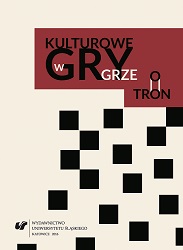Prehistoria w Pieśni lodu i ognia
Prehistory in A Song of Ice and Fire
Author(s): Aneta Kruc
Subject(s): History, Language and Literature Studies, Literary Texts
Published by: Wydawnictwo Uniwersytetu Śląskiego
Summary/Abstract: The article attempts to identify the inspirations which G.R.R. Martin derives from the contemporary studies of prehistory. Unlike Tolkien, who was deeply indebted to German myths, Martin encapsulates yore in his work, stimulating the imagination of a reader in the 21st century with a power not weaker than that of any mythology. The predominant scienceinfluencing Martin in his creation of the quasi-Pleistocene of Westeros and Essos is palaeontology. Nevertheless, Martin equally well manages to revive the human culture of the actual prehistoric times. Consequently, he mostly draws upon the physical anthropology and archaeology. In order to depict the distant past of Westeros, Martin divides its times into threeperiods, resembling the traditional classification of prehistory into the Stone Age, the Bronze Age, and the Iron Age. The strategy adopted by Martin serves a twofold function; on the onehand, it allows him to oppose the rational world of Westeros to the lands beyond the Wall, tossed by magical forces, while on the other – it recalls the recent interest in the mysteries of prehistory embedded in popular culture, and by doing so it makes the universe of A Song of Ice and Fire familiar to readers.
Book: Kulturowe gry w „Grze o tron”
- Page Range: 29-48
- Page Count: 20
- Publication Year: 2016
- Language: Polish
- Content File-PDF

